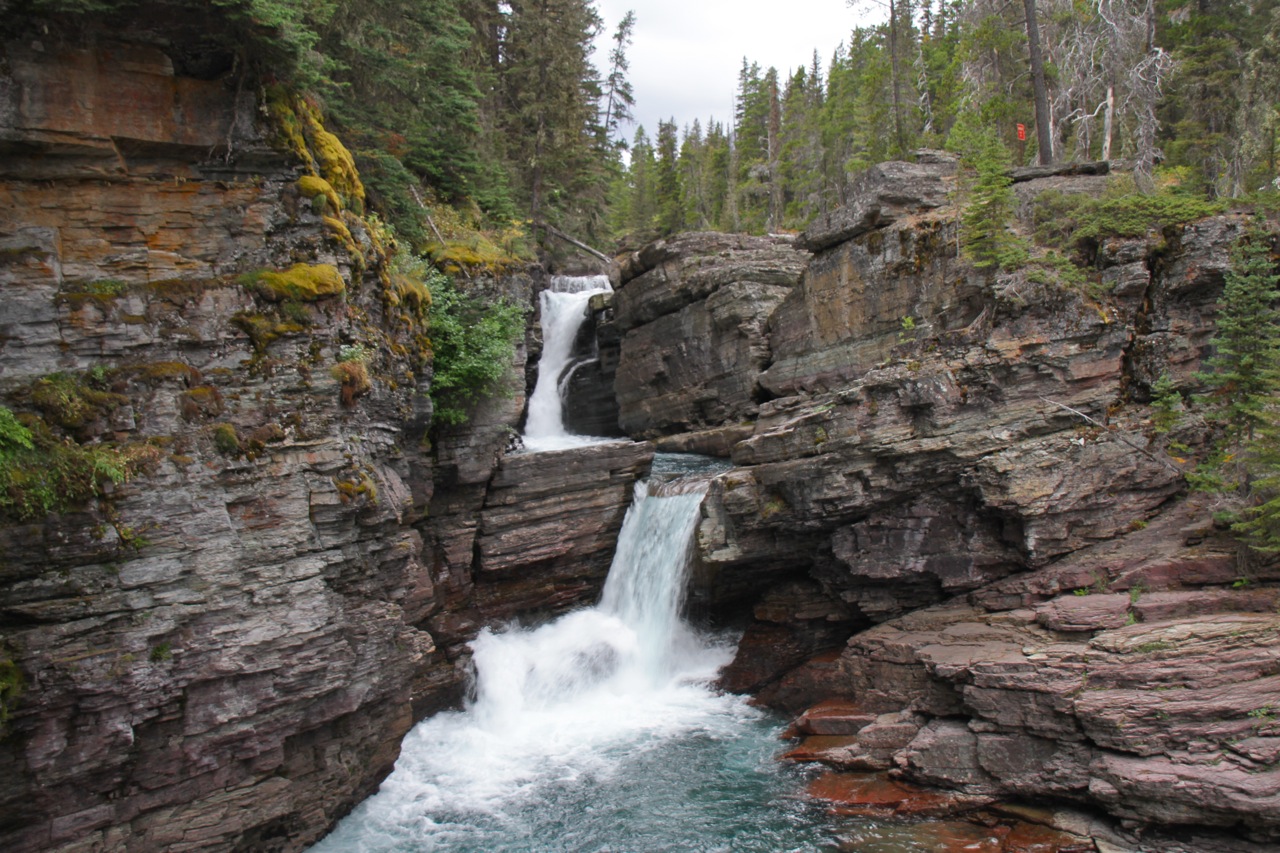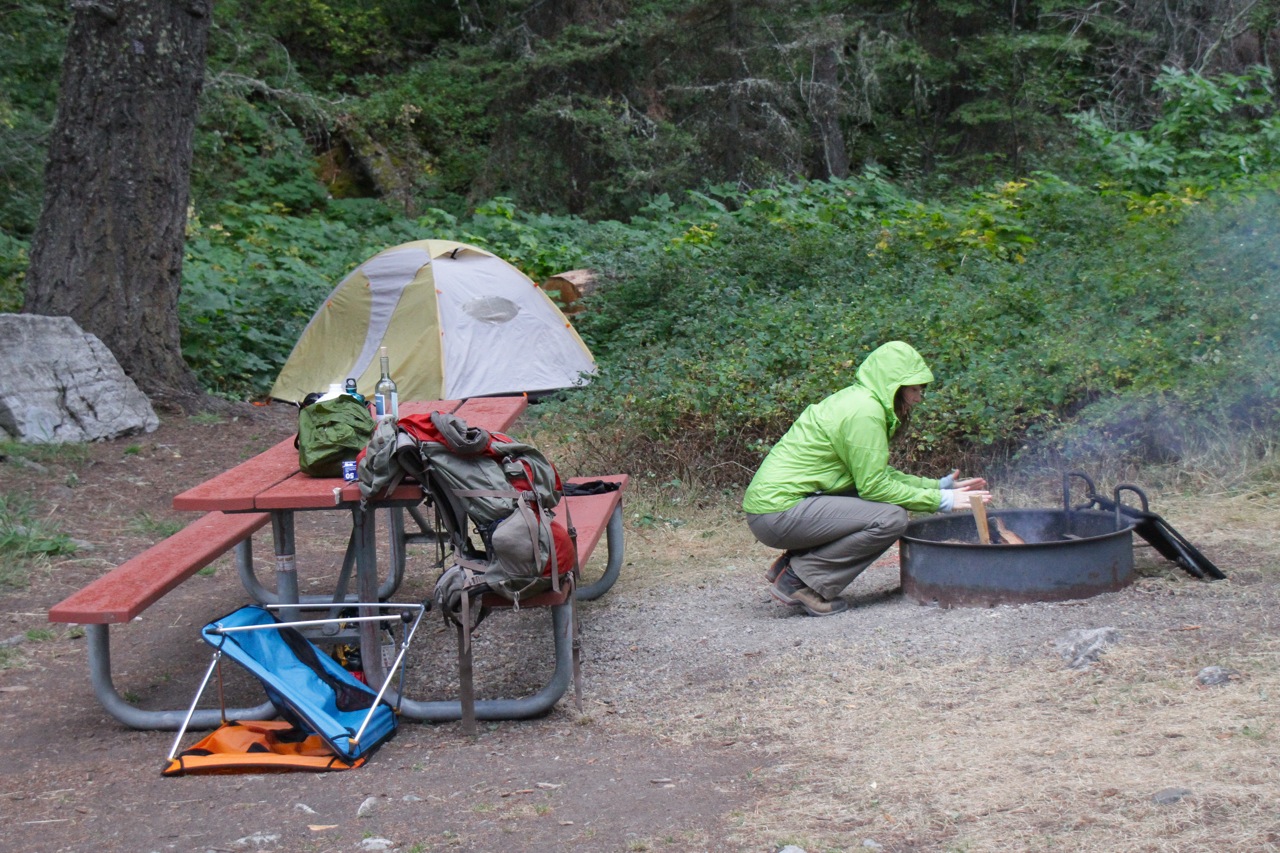Glacier National Park
Of all the national parks in this beautiful country, we had been itching to get to Glacier for years. This entire road trip formed around our visit to Glacier, because we had to budget enough time to be able to get a good feel for the park and its fast-disappearing namesake glaciers. (It is estimated that by 2020, all of the thirty or so remaining glaciers will be gone. See them while you can.)
Before we arrived, though, it was time to get the car checked, so we’d have peace of mind that we wouldn’t breakdown in the mountains! We landed in Kalispell, Montana, which is really at the foot of the mountains and a sort of gateway into western Glacier. Luckily, Kalispell is a big enough town that we could get the oil changed and all the major fluids topped off in the car, and the stop seemed quicker than ever (we had only enough time to post one blog using Valvoline’s free wifi). Then we headed into the Park, flashing our National Parks annual pass at Glacier’s southwestern entrance.
Since we arrived a little too late in the day to venture into the wilds of the park, we went straight to the first campground, near Apgar Village. After setting up the tent, we drove up the road a bit to check out Lake McDonald, exploring the shores just before sunset. Beautiful rugged mountains reflected in the pristine lake, and we were in disbelief that we’d finally arrived at this pinnacle of a National Park. Thankful for the warm, mild late summer evening, we returned to camp ready to cook up a storm.
We made a quick barbecue sauce again (sriracha, bacon fat, tomato paste, lemon juice, Mrs. Dash, and honey, to name a few ingredients), but we’d stepped out of our chicken comfort zone and opted instead to try our hands at campfire-grilled pork. As an accompaniment, we roasted foil-wrapped diced apple, onion and celery. It was our first time campfire-cooking real pork (this was no Spam), and it turned out alright, if a little dry from a bit of overly-thorough cooking. The cooked apples, which we nabbed from the hotel in Idaho, were tasty and complemented the meat nicely, but it wasn’t quite a slam-dunk. There’s always room for improvement! We stayed up later than usual, relishing the mild temps, which was a surprise given how far north we were!
At some point, the temperatures must’ve plummeted, because we awoke to a chilly but sunny morning. Makes sense. Eager to see the park, we quickly ate some yogurt and a banana (again, courtesy of the Idaho hotel), and then set out onto Going-To-The-Sun Road, which famously winds its way through the park. At the middle point, we crossed over the Continental Divide at Logan’s Pass, which offers some outstanding views of the vast wilderness. Continuing on to the eastern side of the park, we set up our tent at Rising Sun Campground, and then hopped back in the car to go back to Logan’s Pass.
Our first hike was the Highline Trail, which in its entirety amounts to about 15 miles, but instead we chose to do an out-and-back for about an hour. It was a little freaky in the beginning, because there was a group of people coming from the opposite direction, speaking of a grizzly cub that’d been following behind them on the trail, just seconds before we arrived. That could’ve been pretty amazing to see, but everyone was a bit on edge because the grizzly mother was nowhere to be found. After a few minutes of wavering (Should we? Should we not?), we continued down the trail. Highline Trail is pretty cool because you stay at around the same elevation as Logan’s Pass but cutting a high line (get it?) across the mid section of the mountain. At one point, the trail got pretty narrow, beckoning hikers to hold on to the wire lines at the inside edge of a cliff that dropped down at least a hundred feet to the road. We wondered how often someone accidentally kicks loose rocks that fall and damage windshields...
Highline Trail was also great for wildlife watching. We picked out several mountain goats, an easy thing thanks to their stark white coats, and we were surprised with how sturdy they looked. Much harder to see because they absolutely disappear into their brown rocky surroundings were a few huge and intimidating bighorn sheep. Just off the trail we briefly saw a pika, an adorable high-mountain member of the rabbit family that looks like a cross between a rabbit and a mouse, whose numbers are beginning to dwindle due to climate change (they are suffering from declining habitats, and have to head higher and higher into the mountains, chasing their native high rocky zones). We also saw a chipmunk, always captivated by their short, quick movements and beautiful little coats. There was also an abundance of wildflowers and amazing views down the valley.
After that short jaunt, we walked across Logan’s Pass and up onto another trail to Hidden Lake, again about a mile long. The first half of the trail is an elevated wooden boardwalk, with some stairs built in, to make it “easy” for people. It’s funny though, because we think it’s actually harder on your feet to walk on those planks rather than plain old dirt and rocks. At the end of the trail we stopped to snack on some jerky, taking in the amazing surroundings and always half-wondering what wildlife was out there hidden by the distance.
Then we started back, and about halfway down the trail we experienced the most entertaining wildlife sighting ever. We were walking on the elevated boardwalk of a trail when we spotted a hairy animal about the size of a woodchuck. Unsure of what the creature was, Kristen started to ask and just before Loren could answer, a passerby said “Marmot” without breaking pace. This marmot was adorable and apparently not afraid of humans, eating the yellow wildflowers and their leaves, which cracked us up. See, he was not only the first marmot Kristen had ever seen, he reminded us so much of one of our cats back home, Wally. We’ve always said that he’s part dog, part walrus, part otter... Now we know he’s also part marmot! This little guy was so goofy and clumsy, we spent about 10 minutes watching him and giggling, until he was out of sight.
Determined to get in at least one more hike before the sun went down, we drove a few miles east, back toward our awaiting tent, and stopped off to do the 1 mile hike to the beautiful but not gigantic Mary’s Falls. We sat for a few minutes to take in its mesmerizing constant flow, then explored a bit more off the trail before heading back to the car.
Back at camp, the drizzle that was picking up started to come down a little heavier, making it harder and harder to make dinner and keep up the campfire. We roasted one foil-wrapped yam and when it was ready, we split the package in half and each used a bit of butter for taste. Easy and delicious! A new camping tradition, perhaps. Next, we ate sardines in the car, right out of the can, to avoid the falling rain and also make sure the fish-smell stayed in the car and not near our tent (it is bear-country after all!).
Lucky for us, the heaviest downfall didn’t start until we were safely inside our tent for the night. Great timing. Believe it or not, this was the first rain we’d received in over three weeks, even though we’d been traveling through Northern California, Oregon and Washington.



















